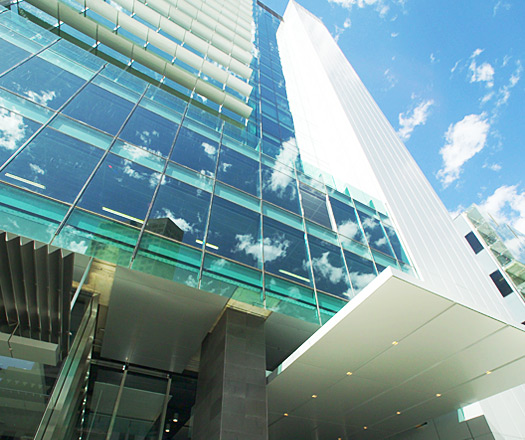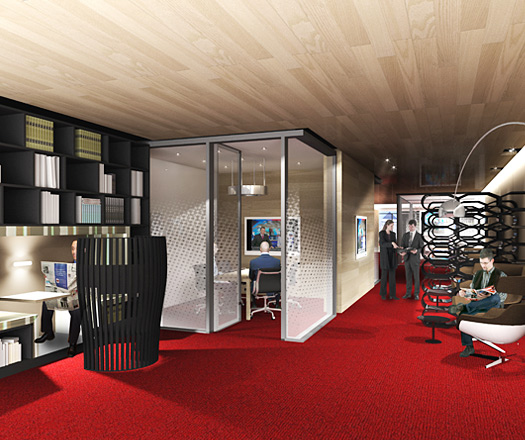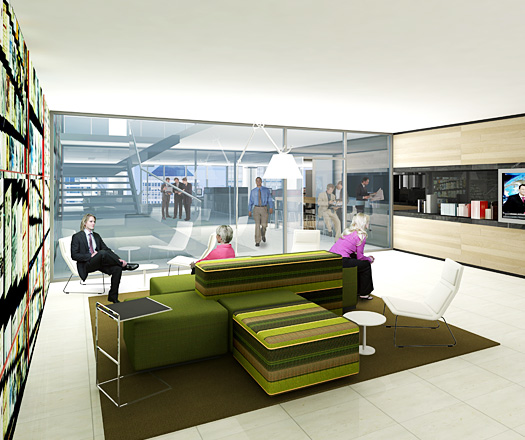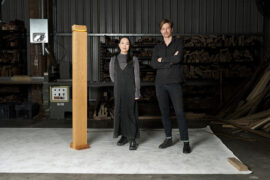In this special report, Australian-born Rosina di Maria tells indesignlive.com of her recent move to Europe as Senior Associate at Woods Bagot, London.
April 15th, 2008
Rosina Di Maria trained in interior design at the University of South Australia and spent eight years working in Adelaide. Though she has travelled overseas — to Milan and Paris to obtain a Certificate in Illuminate Engineering — it is fair to say that she has spent much of her professional life in Australia. Recently promoted to senior associate in Woods Bagot’s London studio, Rosina reflects on her move to the Europe and the differences in design practice that she has encountered.
The myth of the ‘brain drain’ popped recently when it was revealed that, not only are Australians taking the opportunity to work overseas, they are also bringing the experience they gain back with them when they come home. In some ways, this was always obvious, though perhaps not foremost in peoples’ minds during the emigration concerns that abounded at the turn of the 21st century. As Australians we’ve always been capable of making ourselves at home wherever we go, but family, friends, and more often than not the weather, have always called us back.
We can do away, too, with the notion that Australia is geographically isolated, and notoriously inward looking. In reality, the country is on the very cusp of the emergent and now burgeoning Asian market. In terms of design, we are, in fact, sector leaders. At Woods Bagot, we are designing buildings in Hong Kong, Singapore, and as far a field as Doha and Dubai from our Australian studios.
Still, there is something to be said for the ‘overseas experience’, whether the traditional short trip of two years or substantially longer. Europe and the United States remain distinct markets in their own right, with different customs, traditions, methods, and expectations. For designers it’s always valuable to spend time working in markets other than that which you call ‘home’, if only to expose yourself to a different ‘flavour’ of design and architecture.
With that in mind I recently accepted a transfer to Woods Bagot’s London studio. The London studio was founded in 2000, which certainly makes it a new player in the market when compared to our Australian history, which stretches back to 1869. Nevertheless, we have already made quite an impact on the UK capital and the country as a whole. Our corporate interiors team is already rated in the top ten in London according to market share and we have designed the tallest residential tower in Europe in Manchester, on which construction will soon begin.
While I’ve travelled before in Europe and undertaken training in Paris and Milan for my Certificate in Illuminate Engineering, I’ve never experienced life as someone who lives and works in London. As everyone who has settled here before knows, Londoners take great pride in their reputation and consider their city the financial capital of the world. You can certainly see why: London froths and bubbles with activity.
This carries over into the way that design and architecture is practiced in the UK market. Ross Donaldson, Group Managing Director of Woods Bagot, made a very interesting remark to the media during his recent extended stay in the London studio: “The scarcest resource in the 21st Century will be talent, not capital”.
With that in mind, Woods Bagot London tends to pool its talent across the traditional divides found in an architectural and design practice. While I was in Australia this isn’t something I often saw. Corporate interior designers tended to stick to corporate interiors, lifetstyle experts to hotels, restaurants, and so on. Since coming to London I’ve worked on the Rolls Building, an office development which will include courts, the Tsada Golf Resort in Cyprus, and a luxury boutique hotel in south east England.
This represents a real growth experience for a young designer. I’ve found, particularly in the area of lighting design, that the boundaries we set for ourselves are quite artificial. A lighting solution that worked with a corporate interior can be adapted to a hospitality interior with equally stunning effect. Of course, to understand this requires the opportunity to adapt your unique design techniques to which you are accustomed. Though it’s a cliché, it is to some extent a matter of ‘thinking outside the box’, where the box is the type of spaces that as designers were are used to dealing with.
This is something that Woods Bagot excels at doing, and in London it is essential that it does so. In the rest of the world, the jury may be out on whether the city is the world’s new financial capital, but here the English are sure of it and their ambitions for the built environment equals these claims. To survive in London, let alone thrive, designers must constantly come up with designs that make a statement and provide impact.
It’s an excitement that I’m thrilled to be part of, and one that I am sure is going to expand my career and skills. In Australia, we should think of the experience of working in London as what it has always been and continues to be: as a definite ‘brain-gain’ from which we can learn much.
Contacts:
www.woodsbagot.co.uk



Images: Rosina di Maria’s work for Woods Bagot
INDESIGN is on instagram
Follow @indesignlive
A searchable and comprehensive guide for specifying leading products and their suppliers
Keep up to date with the latest and greatest from our industry BFF's!

The undeniable thread connecting Herman Miller and Knoll’s design legacies across the decades now finds its profound physical embodiment at MillerKnoll’s new Design Yard Archives.
The new range features slabs with warm, earthy palettes that lend a sense of organic luxury to every space.

For Aidan Mawhinney, the secret ingredient to Living Edge’s success “comes down to people, product and place.” As the brand celebrates a significant 25-year milestone, it’s that commitment to authentic, sustainable design – and the people behind it all – that continues to anchor its legacy.
The Victoria Law School – formerly Land Titles Office – was the venue for the launch of Melbourne Open House on Wednesday 22 June. 120 guests turned out to see Peter Maddison from Grand Designs Australia launch the list of 75 buildings opening their doors to the public this year.

Planex’s xLocker2 has secured the coveted Design Excellence award at the 2019 Good Design Awards, and it’s well deserved.
The internet never sleeps! Here's the stuff you might have missed

AHEC’s KEEP exhibition at Cult Sydney sees six Australian architects craft lasting furniture pieces, on view until 4th October.